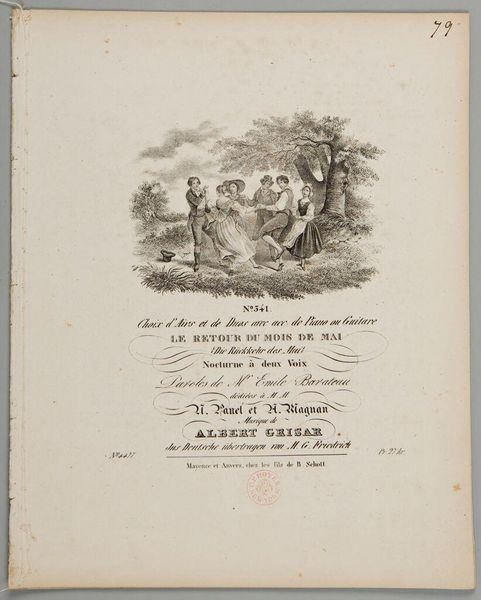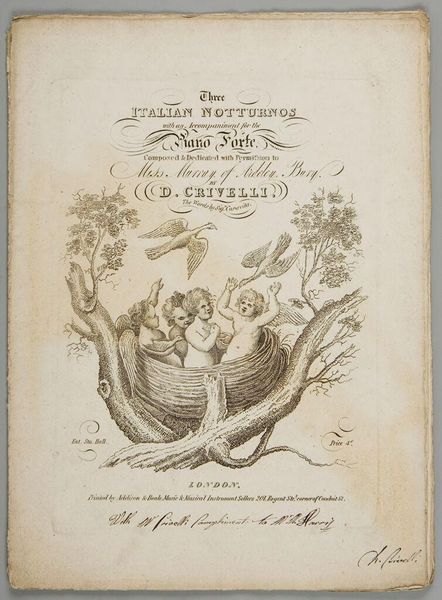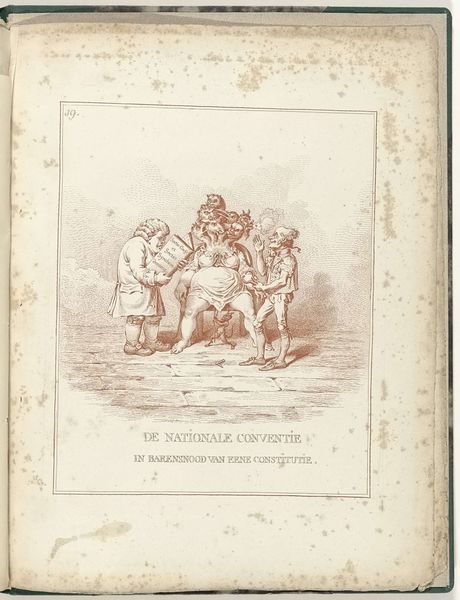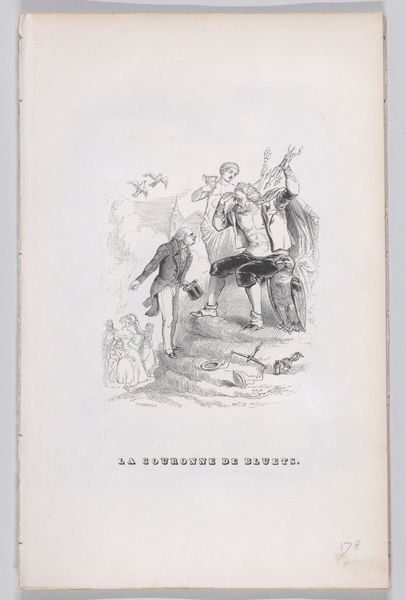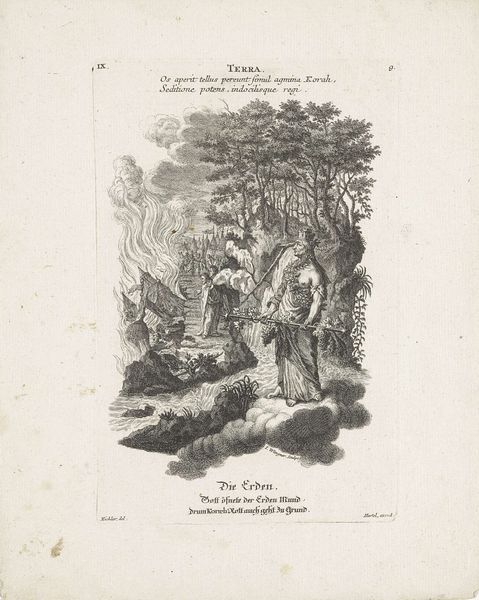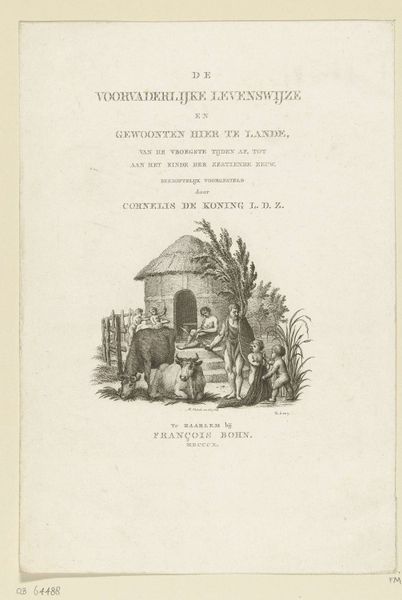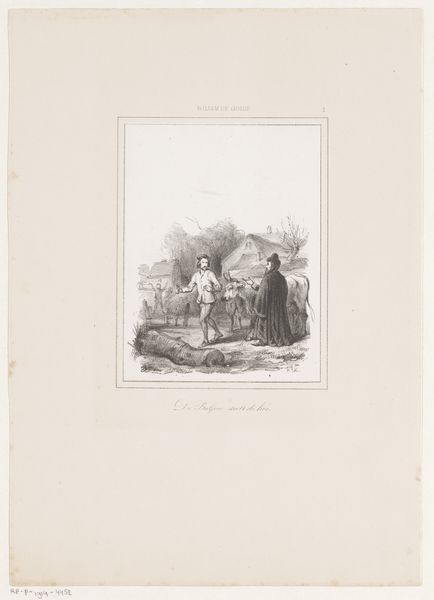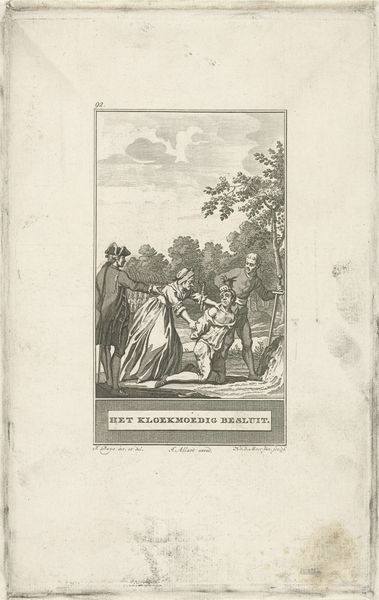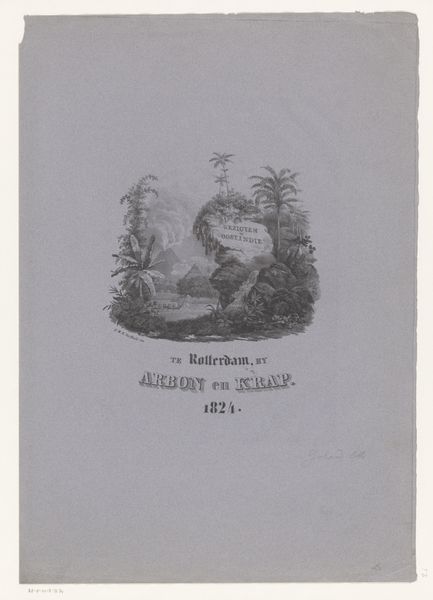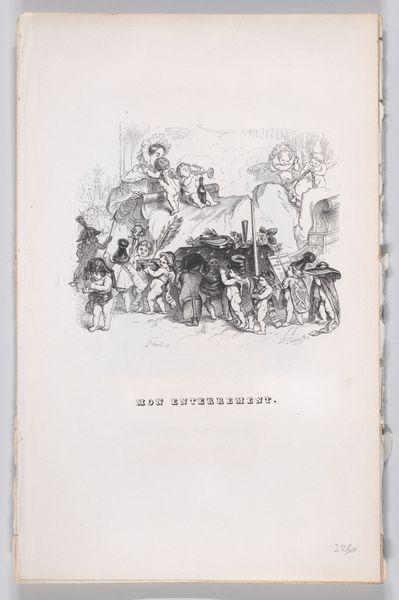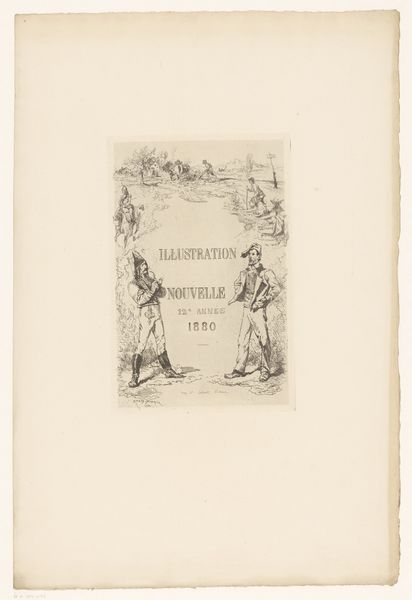
Dimensions: height 232 mm, width 146 mm
Copyright: Rijks Museum: Open Domain
Editor: This is “Allegorische voorstelling met putto met zeis,” an engraving by Willem Kok, dated 1792. It looks like a book illustration. It's intriguing—I’m curious about the juxtaposition of the playful putto with what looks like symbols of death and decay. What can you tell me about the history behind this image? Curator: Well, considering its historical context, we must look beyond a simple juxtaposition of life and death. It’s dated 1792, right after the start of the French Revolution. In the Netherlands, there was growing political tension. Allegories were commonly used to subtly express political sentiments. The putto, wielding a scythe—an agricultural tool—likely doesn’t just represent death. It may speak to cutting away the old order. Editor: So, the scythe has a double meaning here. Is that a deliberate move to protect the artist or publisher? Curator: Exactly. Visual language became incredibly important, a coded way of discussing controversial ideas in public. The ruined buildings in the background suggest a crumbling established order. See how the publisher is listed prominently at the bottom? They played a key role in disseminating these visual arguments, carefully managing how the public engaged with such loaded imagery. Editor: I see it now. It is less about decay and more about radical change. Did people at the time really pick up on these allegories? Curator: Absolutely. Print culture thrived in this era. Pamphlets and illustrated books circulated widely, fostering intense political debates within coffee houses and reading circles. The effectiveness of this engraving depended on a shared understanding of symbols and a population keenly aware of the unfolding revolution in France. It spoke directly to their anxieties and aspirations. Editor: That makes so much more sense now. It's amazing how a seemingly simple image becomes a powerful piece of social commentary once you understand the historical background. Curator: Precisely. And remembering that museums themselves are part of that political landscape, showcasing and framing history in ways that inevitably reflect power dynamics. It always demands further analysis.
Comments
No comments
Be the first to comment and join the conversation on the ultimate creative platform.
